Individual tours
Alentejo 2025
“For me, the Alentejo is wide plains, hikes across mountains and valleys, ancient cork oaks and picturesque, white villages that have many a story to tell. There is always a special stillness over the landscape here, where everyday life suddenly seems far away. The feeling of peace and happiness that fills me when I look out over the landscape is simply indescribable.
I also love the diversity of the Alentejo. There are the magical beaches of the Tróia peninsula near Grândola, the view of the deep blue of the Alqueva dam from the medieval heart of tranquil Monsaraz and the exciting journey into prehistoric times in the caves and megalithic sites near Mourão. In Serpa, I love to just sit down, close my eyes and dream myself away to the sounds of traditional Cante Alentejano.”
How to start your Alentejo tour


Our recommendation for you
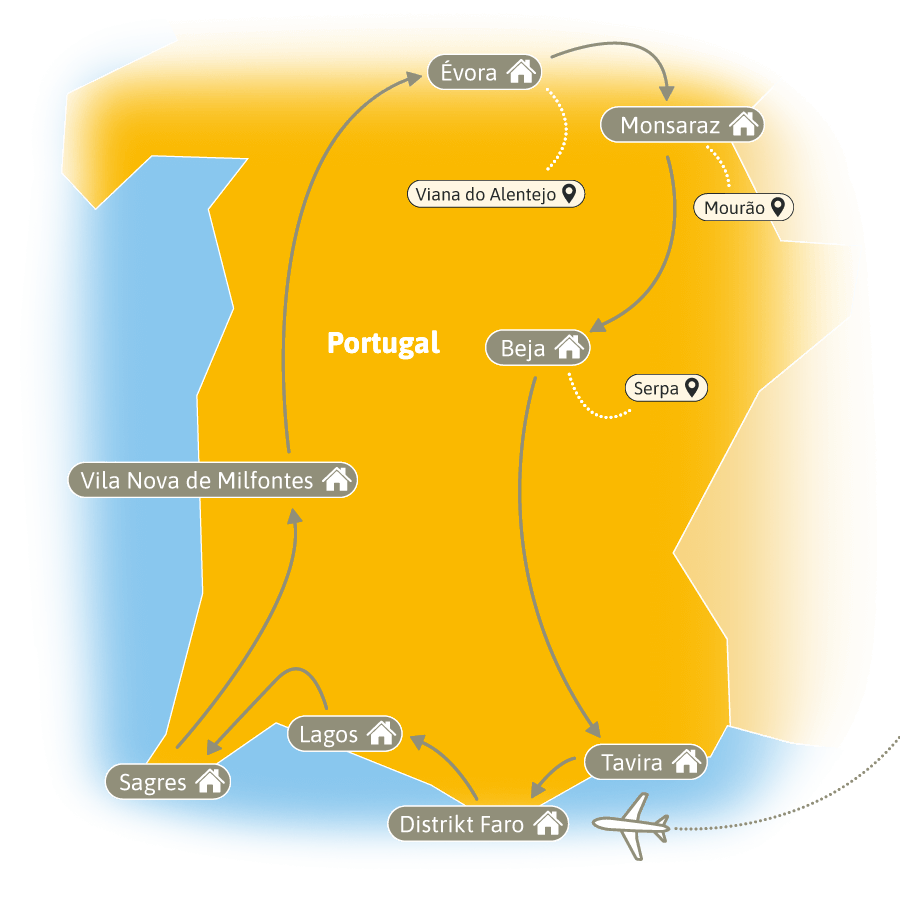
- 15 days - 7 places
- Lagos (2 nights)
- Sagres (2 nights)
- Vila Nova de Milfontes (2 nights)
- Évora (2 nights)
- Monsaraz (3 nights)
- Beja (2 nights)
- Tavira (1 night)
- Further highlights
- Rota Vicentina Panorama Trail
- Viana do Alentejo on the Way of St James
- Medieval town of Monsaraz
- Castles of Moura & Mourão
- Arraiolos
- Serpa
- Mértola

Further ideas for your Alentejo and Portugal tour
Discover Alentejo
Alentejo – Enjoy culture
Perhaps nowhere can you experience living history better than in the 2,000-year-old Évora. Here you will encounter Romans and Visigoths, Moors and medieval Christians – and their architectural achievements. So it’s no wonder that UNESCO has discovered several world heritage sites here and declared the town an open-air museum. Discover the Temple of Diana, the Chapel of Bones, magnificent palaces and many a gem from Gothic to Renaissance.
Apart from the religious buildings in Beja, many of the historic buildings here have Roman roots. This includes the Castelo of the city, which today presents itself in medieval splendour. Original Roman structures can be found, for example, in parts of the city wall or at the Ruínas Romanas de Pisões archaeological site or the Muro da Prega wall not far from the city.
However, there is not only a lot to see in the Alentejo, but also a lot to hear. Don’t miss the opportunity to listen to the Cante Alentejano during your visit – perhaps in its unofficial capital Serpa or in Alvito, where this immaterial cultural heritage of UNESCO is still lovingly cultivated.
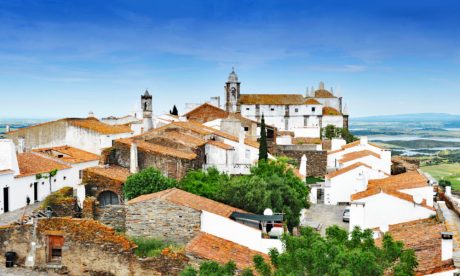
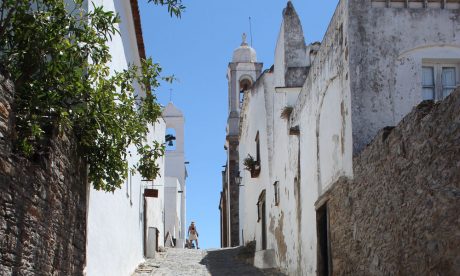

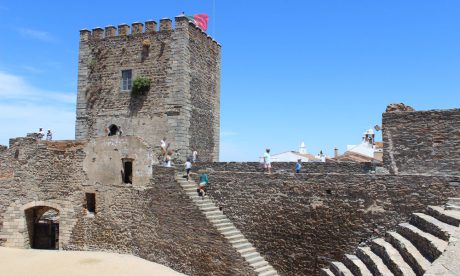
Alentejo – impressive landscapes
The Alentejo is a collection of many different landscapes: Estuaries, coral reefs and majestic cliffs on the coast, backed by picturesque dune landscapes and salt marshes. Mountains rise up inland, their foothills reaching almost as far as the sea. You can look out over vast plateaus and hike through ancient moors or in the shade of the widespread cork oaks. And probably no route shows you this diversity better than a hike on the Rota Vicentina, which offers challenging and easier routes for more or less experienced hikers.
Discover a fantastic natural gem not far from the coast in the natural area of the Serra de Grândola. The fresh breeze from the nearby ocean plays with the leaves of the cork oaks and small, crystal-clear mountain streams run between their roots. So take the sometimes challenging path in your stride. The mountains and the forest will reward you with unforgettable moments.
Experience the tranquillity and vastness of the Alentejo in the Campo branco, the shimmering white fields of the seemingly endless plain around Castro Verde. In this unique natural area, you can also discover rarities such as the great bustard and elegant cranes.
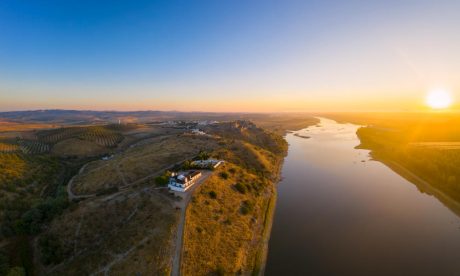


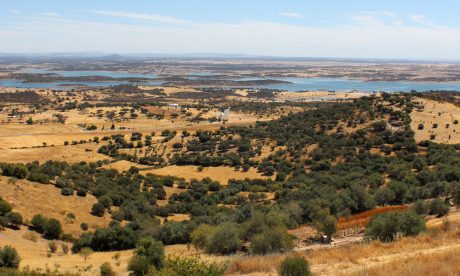
Alentejo culinary delights
The Alentejo is a paradise for all slow food connoisseurs. Its varied, seasonal cuisine has even earned the region a reputation as the culinary soul of Portugal. While you can indulge in seafood, stockfish and other treasures from the nearby Atlantic on the coast, it is pork, bread and vegetables that tantalise the palate inland.And pampering is to be taken literally, especially when it comes to pork.The flavour here is completely different to what you are probably used to.Here, the pigs roam freely, move around a lot and eat acorns and other forage they forage themselves. This gives dishes such as Carne de Porco à Alentejana, pork with mussels, a very special flavour.
However, Alentejo cuisine would not be complete without olive oil, migas and … Petiscos. This Portuguese version of tapas comes in countless variations, with almost every restaurant having its own recipe, which often varies according to the season. The same applies to soups such as gazpacho, sopa de bacalhau and sopa de tomate com linguiça, a tomato soup with a sausage garnish.




Alentejo – authentic and up close
In and around Mourão and Serpa, the Cante Alentejano is still at its most authentic. How about combining this acoustic pleasure with a visit to a quinta and the culinary delights of the region? Discover the ancient vines of the Quinta do Paral, the Vinhas Velhas, the wine tradition of the Alentejo and follow the wine from the vine to the bottle at the quinta – before tasting the exquisite wines, of course.

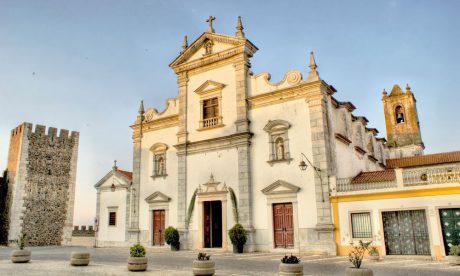


You are travelling individually but in the best company





